-
EXECUTIVE SUMMARY
-
Market Overview
-
Key Findings
-
Market Segmentation
-
Competitive Landscape
-
Challenges and Opportunities
-
Future Outlook
-
MARKET INTRODUCTION
-
Definition
-
Scope of the study
- Research Objective
- Assumption
- Limitations
-
RESEARCH METHODOLOGY
-
Overview
-
Data Mining
-
Secondary Research
-
Primary Research
- Primary Interviews and Information Gathering Process
- Breakdown of Primary Respondents
-
Forecasting Model
-
Market Size Estimation
- Bottom-Up Approach
- Top-Down Approach
-
Data Triangulation
-
Validation
-
MARKET DYNAMICS
-
Overview
-
Drivers
-
Restraints
-
Opportunities
-
MARKET FACTOR ANALYSIS
-
Value chain Analysis
-
Porter's Five Forces Analysis
- Bargaining Power of Suppliers
- Bargaining Power of Buyers
- Threat of New Entrants
- Threat of Substitutes
- Intensity of Rivalry
-
COVID-19 Impact Analysis
- Market Impact Analysis
- Regional Impact
- Opportunity and Threat Analysis
-
GENERIC PHARMACEUTICALS MARKET, BY DRUG TYPE (USD BILLION)
-
Small Molecule Drugs
-
Biologics
-
Biosimilars
-
GENERIC PHARMACEUTICALS MARKET, BY FORMULATION TYPE (USD BILLION)
-
Tablets
-
Injectables
-
Topicals
-
Capsules
-
Solutions
-
GENERIC PHARMACEUTICALS MARKET, BY THERAPEUTIC AREA (USD BILLION)
-
Cardiovascular Diseases
-
Diabetes
-
Cancer
-
CNS Disorders
-
Infectious Diseases
-
GENERIC PHARMACEUTICALS MARKET, BY DISTRIBUTION CHANNEL (USD BILLION)
-
Retail Pharmacy
-
Hospital Pharmacy
-
Online Pharmacy
-
Wholesalers
-
GENERIC PHARMACEUTICALS MARKET, BY REGIONAL (USD BILLION)
-
North America
- US
- Canada
-
Europe
- Germany
- UK
- France
- Russia
- Italy
- Spain
- Rest of Europe
-
APAC
- China
- India
- Japan
- South Korea
- Malaysia
- Thailand
- Indonesia
- Rest of APAC
-
South America
- Brazil
- Mexico
- Argentina
- Rest of South America
-
MEA
- GCC Countries
- South Africa
- Rest of MEA
-
COMPETITIVE LANDSCAPE
-
Overview
-
Competitive Analysis
-
Market share Analysis
-
Major Growth Strategy in the Generic Pharmaceuticals Market
-
Competitive Benchmarking
-
Leading Players in Terms of Number of Developments in the Generic Pharmaceuticals Market
-
Key developments and growth strategies
- New Product Launch/Service Deployment
- Merger & Acquisitions
- Joint Ventures
-
Major Players Financial Matrix
- Sales and Operating Income
- Major Players R&D Expenditure. 2023
-
COMPANY PROFILES
-
Stada Arzneimittel
- Financial Overview
- Products Offered
- Key Developments
- SWOT Analysis
- Key Strategies
-
Sandoz
- Financial Overview
- Products Offered
- Key Developments
- SWOT Analysis
- Key Strategies
-
Cipla
- Financial Overview
- Products Offered
- Key Developments
- SWOT Analysis
- Key Strategies
-
Sun Pharmaceutical Industries
- Financial Overview
- Products Offered
- Key Developments
- SWOT Analysis
- Key Strategies
-
Alvogen
- Financial Overview
- Products Offered
- Key Developments
- SWOT Analysis
- Key Strategies
-
Teva Pharmaceutical Industries
- Financial Overview
- Products Offered
- Key Developments
- SWOT Analysis
- Key Strategies
-
Perrigo Company
- Financial Overview
- Products Offered
- Key Developments
- SWOT Analysis
- Key Strategies
-
Novartis
- Financial Overview
- Products Offered
- Key Developments
- SWOT Analysis
- Key Strategies
-
Mylan
- Financial Overview
- Products Offered
- Key Developments
- SWOT Analysis
- Key Strategies
-
Zydus Cadila
- Financial Overview
- Products Offered
- Key Developments
- SWOT Analysis
- Key Strategies
-
Hikma Pharmaceuticals
- Financial Overview
- Products Offered
- Key Developments
- SWOT Analysis
- Key Strategies
-
Aurobindo Pharma
- Financial Overview
- Products Offered
- Key Developments
- SWOT Analysis
- Key Strategies
-
Lupin Pharmaceuticals
- Financial Overview
- Products Offered
- Key Developments
- SWOT Analysis
- Key Strategies
-
Dr. Reddy's Laboratories
- Financial Overview
- Products Offered
- Key Developments
- SWOT Analysis
- Key Strategies
-
Amgen
- Financial Overview
- Products Offered
- Key Developments
- SWOT Analysis
- Key Strategies
-
APPENDIX
-
References
-
Related Reports
-
LIST OF TABLES
-
LIST OF ASSUMPTIONS
-
NORTH AMERICA GENERIC PHARMACEUTICALS MARKET SIZE ESTIMATES & FORECAST, BY DRUG TYPE, 2019-2035 (USD BILLIONS)
-
NORTH AMERICA GENERIC PHARMACEUTICALS MARKET SIZE ESTIMATES & FORECAST, BY FORMULATION TYPE, 2019-2035 (USD BILLIONS)
-
NORTH AMERICA GENERIC PHARMACEUTICALS MARKET SIZE ESTIMATES & FORECAST, BY THERAPEUTIC AREA, 2019-2035 (USD BILLIONS)
-
NORTH AMERICA GENERIC PHARMACEUTICALS MARKET SIZE ESTIMATES & FORECAST, BY DISTRIBUTION CHANNEL, 2019-2035 (USD BILLIONS)
-
NORTH AMERICA GENERIC PHARMACEUTICALS MARKET SIZE ESTIMATES & FORECAST, BY REGIONAL, 2019-2035 (USD BILLIONS)
-
US GENERIC PHARMACEUTICALS MARKET SIZE ESTIMATES & FORECAST, BY DRUG TYPE, 2019-2035 (USD BILLIONS)
-
US GENERIC PHARMACEUTICALS MARKET SIZE ESTIMATES & FORECAST, BY FORMULATION TYPE, 2019-2035 (USD BILLIONS)
-
US GENERIC PHARMACEUTICALS MARKET SIZE ESTIMATES & FORECAST, BY THERAPEUTIC AREA, 2019-2035 (USD BILLIONS)
-
US GENERIC PHARMACEUTICALS MARKET SIZE ESTIMATES & FORECAST, BY DISTRIBUTION CHANNEL, 2019-2035 (USD BILLIONS)
-
US GENERIC PHARMACEUTICALS MARKET SIZE ESTIMATES & FORECAST, BY REGIONAL, 2019-2035 (USD BILLIONS)
-
CANADA GENERIC PHARMACEUTICALS MARKET SIZE ESTIMATES & FORECAST, BY DRUG TYPE, 2019-2035 (USD BILLIONS)
-
CANADA GENERIC PHARMACEUTICALS MARKET SIZE ESTIMATES & FORECAST, BY FORMULATION TYPE, 2019-2035 (USD BILLIONS)
-
CANADA GENERIC PHARMACEUTICALS MARKET SIZE ESTIMATES & FORECAST, BY THERAPEUTIC AREA, 2019-2035 (USD BILLIONS)
-
CANADA GENERIC PHARMACEUTICALS MARKET SIZE ESTIMATES & FORECAST, BY DISTRIBUTION CHANNEL, 2019-2035 (USD BILLIONS)
-
CANADA GENERIC PHARMACEUTICALS MARKET SIZE ESTIMATES & FORECAST, BY REGIONAL, 2019-2035 (USD BILLIONS)
-
EUROPE GENERIC PHARMACEUTICALS MARKET SIZE ESTIMATES & FORECAST, BY DRUG TYPE, 2019-2035 (USD BILLIONS)
-
EUROPE GENERIC PHARMACEUTICALS MARKET SIZE ESTIMATES & FORECAST, BY FORMULATION TYPE, 2019-2035 (USD BILLIONS)
-
EUROPE GENERIC PHARMACEUTICALS MARKET SIZE ESTIMATES & FORECAST, BY THERAPEUTIC AREA, 2019-2035 (USD BILLIONS)
-
EUROPE GENERIC PHARMACEUTICALS MARKET SIZE ESTIMATES & FORECAST, BY DISTRIBUTION CHANNEL, 2019-2035 (USD BILLIONS)
-
EUROPE GENERIC PHARMACEUTICALS MARKET SIZE ESTIMATES & FORECAST, BY REGIONAL, 2019-2035 (USD BILLIONS)
-
GERMANY GENERIC PHARMACEUTICALS MARKET SIZE ESTIMATES & FORECAST, BY DRUG TYPE, 2019-2035 (USD BILLIONS)
-
GERMANY GENERIC PHARMACEUTICALS MARKET SIZE ESTIMATES & FORECAST, BY FORMULATION TYPE, 2019-2035 (USD BILLIONS)
-
GERMANY GENERIC PHARMACEUTICALS MARKET SIZE ESTIMATES & FORECAST, BY THERAPEUTIC AREA, 2019-2035 (USD BILLIONS)
-
GERMANY GENERIC PHARMACEUTICALS MARKET SIZE ESTIMATES & FORECAST, BY DISTRIBUTION CHANNEL, 2019-2035 (USD BILLIONS)
-
GERMANY GENERIC PHARMACEUTICALS MARKET SIZE ESTIMATES & FORECAST, BY REGIONAL, 2019-2035 (USD BILLIONS)
-
UK GENERIC PHARMACEUTICALS MARKET SIZE ESTIMATES & FORECAST, BY DRUG TYPE, 2019-2035 (USD BILLIONS)
-
UK GENERIC PHARMACEUTICALS MARKET SIZE ESTIMATES & FORECAST, BY FORMULATION TYPE, 2019-2035 (USD BILLIONS)
-
UK GENERIC PHARMACEUTICALS MARKET SIZE ESTIMATES & FORECAST, BY THERAPEUTIC AREA, 2019-2035 (USD BILLIONS)
-
UK GENERIC PHARMACEUTICALS MARKET SIZE ESTIMATES & FORECAST, BY DISTRIBUTION CHANNEL, 2019-2035 (USD BILLIONS)
-
UK GENERIC PHARMACEUTICALS MARKET SIZE ESTIMATES & FORECAST, BY REGIONAL, 2019-2035 (USD BILLIONS)
-
FRANCE GENERIC PHARMACEUTICALS MARKET SIZE ESTIMATES & FORECAST, BY DRUG TYPE, 2019-2035 (USD BILLIONS)
-
FRANCE GENERIC PHARMACEUTICALS MARKET SIZE ESTIMATES & FORECAST, BY FORMULATION TYPE, 2019-2035 (USD BILLIONS)
-
FRANCE GENERIC PHARMACEUTICALS MARKET SIZE ESTIMATES & FORECAST, BY THERAPEUTIC AREA, 2019-2035 (USD BILLIONS)
-
FRANCE GENERIC PHARMACEUTICALS MARKET SIZE ESTIMATES & FORECAST, BY DISTRIBUTION CHANNEL, 2019-2035 (USD BILLIONS)
-
FRANCE GENERIC PHARMACEUTICALS MARKET SIZE ESTIMATES & FORECAST, BY REGIONAL, 2019-2035 (USD BILLIONS)
-
RUSSIA GENERIC PHARMACEUTICALS MARKET SIZE ESTIMATES & FORECAST, BY DRUG TYPE, 2019-2035 (USD BILLIONS)
-
RUSSIA GENERIC PHARMACEUTICALS MARKET SIZE ESTIMATES & FORECAST, BY FORMULATION TYPE, 2019-2035 (USD BILLIONS)
-
RUSSIA GENERIC PHARMACEUTICALS MARKET SIZE ESTIMATES & FORECAST, BY THERAPEUTIC AREA, 2019-2035 (USD BILLIONS)
-
RUSSIA GENERIC PHARMACEUTICALS MARKET SIZE ESTIMATES & FORECAST, BY DISTRIBUTION CHANNEL, 2019-2035 (USD BILLIONS)
-
RUSSIA GENERIC PHARMACEUTICALS MARKET SIZE ESTIMATES & FORECAST, BY REGIONAL, 2019-2035 (USD BILLIONS)
-
ITALY GENERIC PHARMACEUTICALS MARKET SIZE ESTIMATES & FORECAST, BY DRUG TYPE, 2019-2035 (USD BILLIONS)
-
ITALY GENERIC PHARMACEUTICALS MARKET SIZE ESTIMATES & FORECAST, BY FORMULATION TYPE, 2019-2035 (USD BILLIONS)
-
ITALY GENERIC PHARMACEUTICALS MARKET SIZE ESTIMATES & FORECAST, BY THERAPEUTIC AREA, 2019-2035 (USD BILLIONS)
-
ITALY GENERIC PHARMACEUTICALS MARKET SIZE ESTIMATES & FORECAST, BY DISTRIBUTION CHANNEL, 2019-2035 (USD BILLIONS)
-
ITALY GENERIC PHARMACEUTICALS MARKET SIZE ESTIMATES & FORECAST, BY REGIONAL, 2019-2035 (USD BILLIONS)
-
SPAIN GENERIC PHARMACEUTICALS MARKET SIZE ESTIMATES & FORECAST, BY DRUG TYPE, 2019-2035 (USD BILLIONS)
-
SPAIN GENERIC PHARMACEUTICALS MARKET SIZE ESTIMATES & FORECAST, BY FORMULATION TYPE, 2019-2035 (USD BILLIONS)
-
SPAIN GENERIC PHARMACEUTICALS MARKET SIZE ESTIMATES & FORECAST, BY THERAPEUTIC AREA, 2019-2035 (USD BILLIONS)
-
SPAIN GENERIC PHARMACEUTICALS MARKET SIZE ESTIMATES & FORECAST, BY DISTRIBUTION CHANNEL, 2019-2035 (USD BILLIONS)
-
SPAIN GENERIC PHARMACEUTICALS MARKET SIZE ESTIMATES & FORECAST, BY REGIONAL, 2019-2035 (USD BILLIONS)
-
REST OF EUROPE GENERIC PHARMACEUTICALS MARKET SIZE ESTIMATES & FORECAST, BY DRUG TYPE, 2019-2035 (USD BILLIONS)
-
REST OF EUROPE GENERIC PHARMACEUTICALS MARKET SIZE ESTIMATES & FORECAST, BY FORMULATION TYPE, 2019-2035 (USD BILLIONS)
-
REST OF EUROPE GENERIC PHARMACEUTICALS MARKET SIZE ESTIMATES & FORECAST, BY THERAPEUTIC AREA, 2019-2035 (USD BILLIONS)
-
REST OF EUROPE GENERIC PHARMACEUTICALS MARKET SIZE ESTIMATES & FORECAST, BY DISTRIBUTION CHANNEL, 2019-2035 (USD BILLIONS)
-
REST OF EUROPE GENERIC PHARMACEUTICALS MARKET SIZE ESTIMATES & FORECAST, BY REGIONAL, 2019-2035 (USD BILLIONS)
-
APAC GENERIC PHARMACEUTICALS MARKET SIZE ESTIMATES & FORECAST, BY DRUG TYPE, 2019-2035 (USD BILLIONS)
-
APAC GENERIC PHARMACEUTICALS MARKET SIZE ESTIMATES & FORECAST, BY FORMULATION TYPE, 2019-2035 (USD BILLIONS)
-
APAC GENERIC PHARMACEUTICALS MARKET SIZE ESTIMATES & FORECAST, BY THERAPEUTIC AREA, 2019-2035 (USD BILLIONS)
-
APAC GENERIC PHARMACEUTICALS MARKET SIZE ESTIMATES & FORECAST, BY DISTRIBUTION CHANNEL, 2019-2035 (USD BILLIONS)
-
APAC GENERIC PHARMACEUTICALS MARKET SIZE ESTIMATES & FORECAST, BY REGIONAL, 2019-2035 (USD BILLIONS)
-
CHINA GENERIC PHARMACEUTICALS MARKET SIZE ESTIMATES & FORECAST, BY DRUG TYPE, 2019-2035 (USD BILLIONS)
-
CHINA GENERIC PHARMACEUTICALS MARKET SIZE ESTIMATES & FORECAST, BY FORMULATION TYPE, 2019-2035 (USD BILLIONS)
-
CHINA GENERIC PHARMACEUTICALS MARKET SIZE ESTIMATES & FORECAST, BY THERAPEUTIC AREA, 2019-2035 (USD BILLIONS)
-
CHINA GENERIC PHARMACEUTICALS MARKET SIZE ESTIMATES & FORECAST, BY DISTRIBUTION CHANNEL, 2019-2035 (USD BILLIONS)
-
CHINA GENERIC PHARMACEUTICALS MARKET SIZE ESTIMATES & FORECAST, BY REGIONAL, 2019-2035 (USD BILLIONS)
-
INDIA GENERIC PHARMACEUTICALS MARKET SIZE ESTIMATES & FORECAST, BY DRUG TYPE, 2019-2035 (USD BILLIONS)
-
INDIA GENERIC PHARMACEUTICALS MARKET SIZE ESTIMATES & FORECAST, BY FORMULATION TYPE, 2019-2035 (USD BILLIONS)
-
INDIA GENERIC PHARMACEUTICALS MARKET SIZE ESTIMATES & FORECAST, BY THERAPEUTIC AREA, 2019-2035 (USD BILLIONS)
-
INDIA GENERIC PHARMACEUTICALS MARKET SIZE ESTIMATES & FORECAST, BY DISTRIBUTION CHANNEL, 2019-2035 (USD BILLIONS)
-
INDIA GENERIC PHARMACEUTICALS MARKET SIZE ESTIMATES & FORECAST, BY REGIONAL, 2019-2035 (USD BILLIONS)
-
JAPAN GENERIC PHARMACEUTICALS MARKET SIZE ESTIMATES & FORECAST, BY DRUG TYPE, 2019-2035 (USD BILLIONS)
-
JAPAN GENERIC PHARMACEUTICALS MARKET SIZE ESTIMATES & FORECAST, BY FORMULATION TYPE, 2019-2035 (USD BILLIONS)
-
JAPAN GENERIC PHARMACEUTICALS MARKET SIZE ESTIMATES & FORECAST, BY THERAPEUTIC AREA, 2019-2035 (USD BILLIONS)
-
JAPAN GENERIC PHARMACEUTICALS MARKET SIZE ESTIMATES & FORECAST, BY DISTRIBUTION CHANNEL, 2019-2035 (USD BILLIONS)
-
JAPAN GENERIC PHARMACEUTICALS MARKET SIZE ESTIMATES & FORECAST, BY REGIONAL, 2019-2035 (USD BILLIONS)
-
SOUTH KOREA GENERIC PHARMACEUTICALS MARKET SIZE ESTIMATES & FORECAST, BY DRUG TYPE, 2019-2035 (USD BILLIONS)
-
SOUTH KOREA GENERIC PHARMACEUTICALS MARKET SIZE ESTIMATES & FORECAST, BY FORMULATION TYPE, 2019-2035 (USD BILLIONS)
-
SOUTH KOREA GENERIC PHARMACEUTICALS MARKET SIZE ESTIMATES & FORECAST, BY THERAPEUTIC AREA, 2019-2035 (USD BILLIONS)
-
SOUTH KOREA GENERIC PHARMACEUTICALS MARKET SIZE ESTIMATES & FORECAST, BY DISTRIBUTION CHANNEL, 2019-2035 (USD BILLIONS)
-
SOUTH KOREA GENERIC PHARMACEUTICALS MARKET SIZE ESTIMATES & FORECAST, BY REGIONAL, 2019-2035 (USD BILLIONS)
-
MALAYSIA GENERIC PHARMACEUTICALS MARKET SIZE ESTIMATES & FORECAST, BY DRUG TYPE, 2019-2035 (USD BILLIONS)
-
MALAYSIA GENERIC PHARMACEUTICALS MARKET SIZE ESTIMATES & FORECAST, BY FORMULATION TYPE, 2019-2035 (USD BILLIONS)
-
MALAYSIA GENERIC PHARMACEUTICALS MARKET SIZE ESTIMATES & FORECAST, BY THERAPEUTIC AREA, 2019-2035 (USD BILLIONS)
-
MALAYSIA GENERIC PHARMACEUTICALS MARKET SIZE ESTIMATES & FORECAST, BY DISTRIBUTION CHANNEL, 2019-2035 (USD BILLIONS)
-
MALAYSIA GENERIC PHARMACEUTICALS MARKET SIZE ESTIMATES & FORECAST, BY REGIONAL, 2019-2035 (USD BILLIONS)
-
THAILAND GENERIC PHARMACEUTICALS MARKET SIZE ESTIMATES & FORECAST, BY DRUG TYPE, 2019-2035 (USD BILLIONS)
-
THAILAND GENERIC PHARMACEUTICALS MARKET SIZE ESTIMATES & FORECAST, BY FORMULATION TYPE, 2019-2035 (USD BILLIONS)
-
THAILAND GENERIC PHARMACEUTICALS MARKET SIZE ESTIMATES & FORECAST, BY THERAPEUTIC AREA, 2019-2035 (USD BILLIONS)
-
THAILAND GENERIC PHARMACEUTICALS MARKET SIZE ESTIMATES & FORECAST, BY DISTRIBUTION CHANNEL, 2019-2035 (USD BILLIONS)
-
THAILAND GENERIC PHARMACEUTICALS MARKET SIZE ESTIMATES & FORECAST, BY REGIONAL, 2019-2035 (USD BILLIONS)
-
INDONESIA GENERIC PHARMACEUTICALS MARKET SIZE ESTIMATES & FORECAST, BY DRUG TYPE, 2019-2035 (USD BILLIONS)
-
INDONESIA GENERIC PHARMACEUTICALS MARKET SIZE ESTIMATES & FORECAST, BY FORMULATION TYPE, 2019-2035 (USD BILLIONS)
-
INDONESIA GENERIC PHARMACEUTICALS MARKET SIZE ESTIMATES & FORECAST, BY THERAPEUTIC AREA, 2019-2035 (USD BILLIONS)
-
INDONESIA GENERIC PHARMACEUTICALS MARKET SIZE ESTIMATES & FORECAST, BY DISTRIBUTION CHANNEL, 2019-2035 (USD BILLIONS)
-
INDONESIA GENERIC PHARMACEUTICALS MARKET SIZE ESTIMATES & FORECAST, BY REGIONAL, 2019-2035 (USD BILLIONS)
-
REST OF APAC GENERIC PHARMACEUTICALS MARKET SIZE ESTIMATES & FORECAST, BY DRUG TYPE, 2019-2035 (USD BILLIONS)
-
REST OF APAC GENERIC PHARMACEUTICALS MARKET SIZE ESTIMATES & FORECAST, BY FORMULATION TYPE, 2019-2035 (USD BILLIONS)
-
REST OF APAC GENERIC PHARMACEUTICALS MARKET SIZE ESTIMATES & FORECAST, BY THERAPEUTIC AREA, 2019-2035 (USD BILLIONS)
-
REST OF APAC GENERIC PHARMACEUTICALS MARKET SIZE ESTIMATES & FORECAST, BY DISTRIBUTION CHANNEL, 2019-2035 (USD BILLIONS)
-
REST OF APAC GENERIC PHARMACEUTICALS MARKET SIZE ESTIMATES & FORECAST, BY REGIONAL, 2019-2035 (USD BILLIONS)
-
SOUTH AMERICA GENERIC PHARMACEUTICALS MARKET SIZE ESTIMATES & FORECAST, BY DRUG TYPE, 2019-2035 (USD BILLIONS)
-
SOUTH AMERICA GENERIC PHARMACEUTICALS MARKET SIZE ESTIMATES & FORECAST, BY FORMULATION TYPE, 2019-2035 (USD BILLIONS)
-
SOUTH AMERICA GENERIC PHARMACEUTICALS MARKET SIZE ESTIMATES & FORECAST, BY THERAPEUTIC AREA, 2019-2035 (USD BILLIONS)
-
SOUTH AMERICA GENERIC PHARMACEUTICALS MARKET SIZE ESTIMATES & FORECAST, BY DISTRIBUTION CHANNEL, 2019-2035 (USD BILLIONS)
-
SOUTH AMERICA GENERIC PHARMACEUTICALS MARKET SIZE ESTIMATES & FORECAST, BY REGIONAL, 2019-2035 (USD BILLIONS)
-
BRAZIL GENERIC PHARMACEUTICALS MARKET SIZE ESTIMATES & FORECAST, BY DRUG TYPE, 2019-2035 (USD BILLIONS)
-
BRAZIL GENERIC PHARMACEUTICALS MARKET SIZE ESTIMATES & FORECAST, BY FORMULATION TYPE, 2019-2035 (USD BILLIONS)
-
BRAZIL GENERIC PHARMACEUTICALS MARKET SIZE ESTIMATES & FORECAST, BY THERAPEUTIC AREA, 2019-2035 (USD BILLIONS)
-
BRAZIL GENERIC PHARMACEUTICALS MARKET SIZE ESTIMATES & FORECAST, BY DISTRIBUTION CHANNEL, 2019-2035 (USD BILLIONS)
-
BRAZIL GENERIC PHARMACEUTICALS MARKET SIZE ESTIMATES & FORECAST, BY REGIONAL, 2019-2035 (USD BILLIONS)
-
MEXICO GENERIC PHARMACEUTICALS MARKET SIZE ESTIMATES & FORECAST, BY DRUG TYPE, 2019-2035 (USD BILLIONS)
-
MEXICO GENERIC PHARMACEUTICALS MARKET SIZE ESTIMATES & FORECAST, BY FORMULATION TYPE, 2019-2035 (USD BILLIONS)
-
MEXICO GENERIC PHARMACEUTICALS MARKET SIZE ESTIMATES & FORECAST, BY THERAPEUTIC AREA, 2019-2035 (USD BILLIONS)
-
MEXICO GENERIC PHARMACEUTICALS MARKET SIZE ESTIMATES & FORECAST, BY DISTRIBUTION CHANNEL, 2019-2035 (USD BILLIONS)
-
MEXICO GENERIC PHARMACEUTICALS MARKET SIZE ESTIMATES & FORECAST, BY REGIONAL, 2019-2035 (USD BILLIONS)
-
ARGENTINA GENERIC PHARMACEUTICALS MARKET SIZE ESTIMATES & FORECAST, BY DRUG TYPE, 2019-2035 (USD BILLIONS)
-
ARGENTINA GENERIC PHARMACEUTICALS MARKET SIZE ESTIMATES & FORECAST, BY FORMULATION TYPE, 2019-2035 (USD BILLIONS)
-
ARGENTINA GENERIC PHARMACEUTICALS MARKET SIZE ESTIMATES & FORECAST, BY THERAPEUTIC AREA, 2019-2035 (USD BILLIONS)
-
ARGENTINA GENERIC PHARMACEUTICALS MARKET SIZE ESTIMATES & FORECAST, BY DISTRIBUTION CHANNEL, 2019-2035 (USD BILLIONS)
-
ARGENTINA GENERIC PHARMACEUTICALS MARKET SIZE ESTIMATES & FORECAST, BY REGIONAL, 2019-2035 (USD BILLIONS)
-
REST OF SOUTH AMERICA GENERIC PHARMACEUTICALS MARKET SIZE ESTIMATES & FORECAST, BY DRUG TYPE, 2019-2035 (USD BILLIONS)
-
REST OF SOUTH AMERICA GENERIC PHARMACEUTICALS MARKET SIZE ESTIMATES & FORECAST, BY FORMULATION TYPE, 2019-2035 (USD BILLIONS)
-
REST OF SOUTH AMERICA GENERIC PHARMACEUTICALS MARKET SIZE ESTIMATES & FORECAST, BY THERAPEUTIC AREA, 2019-2035 (USD BILLIONS)
-
REST OF SOUTH AMERICA GENERIC PHARMACEUTICALS MARKET SIZE ESTIMATES & FORECAST, BY DISTRIBUTION CHANNEL, 2019-2035 (USD BILLIONS)
-
REST OF SOUTH AMERICA GENERIC PHARMACEUTICALS MARKET SIZE ESTIMATES & FORECAST, BY REGIONAL, 2019-2035 (USD BILLIONS)
-
MEA GENERIC PHARMACEUTICALS MARKET SIZE ESTIMATES & FORECAST, BY DRUG TYPE, 2019-2035 (USD BILLIONS)
-
MEA GENERIC PHARMACEUTICALS MARKET SIZE ESTIMATES & FORECAST, BY FORMULATION TYPE, 2019-2035 (USD BILLIONS)
-
MEA GENERIC PHARMACEUTICALS MARKET SIZE ESTIMATES & FORECAST, BY THERAPEUTIC AREA, 2019-2035 (USD BILLIONS)
-
MEA GENERIC PHARMACEUTICALS MARKET SIZE ESTIMATES & FORECAST, BY DISTRIBUTION CHANNEL, 2019-2035 (USD BILLIONS)
-
MEA GENERIC PHARMACEUTICALS MARKET SIZE ESTIMATES & FORECAST, BY REGIONAL, 2019-2035 (USD BILLIONS)
-
GCC COUNTRIES GENERIC PHARMACEUTICALS MARKET SIZE ESTIMATES & FORECAST, BY DRUG TYPE, 2019-2035 (USD BILLIONS)
-
GCC COUNTRIES GENERIC PHARMACEUTICALS MARKET SIZE ESTIMATES & FORECAST, BY FORMULATION TYPE, 2019-2035 (USD BILLIONS)
-
GCC COUNTRIES GENERIC PHARMACEUTICALS MARKET SIZE ESTIMATES & FORECAST, BY THERAPEUTIC AREA, 2019-2035 (USD BILLIONS)
-
GCC COUNTRIES GENERIC PHARMACEUTICALS MARKET SIZE ESTIMATES & FORECAST, BY DISTRIBUTION CHANNEL, 2019-2035 (USD BILLIONS)
-
GCC COUNTRIES GENERIC PHARMACEUTICALS MARKET SIZE ESTIMATES & FORECAST, BY REGIONAL, 2019-2035 (USD BILLIONS)
-
SOUTH AFRICA GENERIC PHARMACEUTICALS MARKET SIZE ESTIMATES & FORECAST, BY DRUG TYPE, 2019-2035 (USD BILLIONS)
-
SOUTH AFRICA GENERIC PHARMACEUTICALS MARKET SIZE ESTIMATES & FORECAST, BY FORMULATION TYPE, 2019-2035 (USD BILLIONS)
-
SOUTH AFRICA GENERIC PHARMACEUTICALS MARKET SIZE ESTIMATES & FORECAST, BY THERAPEUTIC AREA, 2019-2035 (USD BILLIONS)
-
SOUTH AFRICA GENERIC PHARMACEUTICALS MARKET SIZE ESTIMATES & FORECAST, BY DISTRIBUTION CHANNEL, 2019-2035 (USD BILLIONS)
-
SOUTH AFRICA GENERIC PHARMACEUTICALS MARKET SIZE ESTIMATES & FORECAST, BY REGIONAL, 2019-2035 (USD BILLIONS)
-
REST OF MEA GENERIC PHARMACEUTICALS MARKET SIZE ESTIMATES & FORECAST, BY DRUG TYPE, 2019-2035 (USD BILLIONS)
-
REST OF MEA GENERIC PHARMACEUTICALS MARKET SIZE ESTIMATES & FORECAST, BY FORMULATION TYPE, 2019-2035 (USD BILLIONS)
-
REST OF MEA GENERIC PHARMACEUTICALS MARKET SIZE ESTIMATES & FORECAST, BY THERAPEUTIC AREA, 2019-2035 (USD BILLIONS)
-
REST OF MEA GENERIC PHARMACEUTICALS MARKET SIZE ESTIMATES & FORECAST, BY DISTRIBUTION CHANNEL, 2019-2035 (USD BILLIONS)
-
REST OF MEA GENERIC PHARMACEUTICALS MARKET SIZE ESTIMATES & FORECAST, BY REGIONAL, 2019-2035 (USD BILLIONS)
-
PRODUCT LAUNCH/PRODUCT DEVELOPMENT/APPROVAL
-
ACQUISITION/PARTNERSHIP
-
LIST OF FIGURES
-
MARKET SYNOPSIS
-
NORTH AMERICA GENERIC PHARMACEUTICALS MARKET ANALYSIS
-
US GENERIC PHARMACEUTICALS MARKET ANALYSIS BY DRUG TYPE
-
US GENERIC PHARMACEUTICALS MARKET ANALYSIS BY FORMULATION TYPE
-
US GENERIC PHARMACEUTICALS MARKET ANALYSIS BY THERAPEUTIC AREA
-
US GENERIC PHARMACEUTICALS MARKET ANALYSIS BY DISTRIBUTION CHANNEL
-
US GENERIC PHARMACEUTICALS MARKET ANALYSIS BY REGIONAL
-
CANADA GENERIC PHARMACEUTICALS MARKET ANALYSIS BY DRUG TYPE
-
CANADA GENERIC PHARMACEUTICALS MARKET ANALYSIS BY FORMULATION TYPE
-
CANADA GENERIC PHARMACEUTICALS MARKET ANALYSIS BY THERAPEUTIC AREA
-
CANADA GENERIC PHARMACEUTICALS MARKET ANALYSIS BY DISTRIBUTION CHANNEL
-
CANADA GENERIC PHARMACEUTICALS MARKET ANALYSIS BY REGIONAL
-
EUROPE GENERIC PHARMACEUTICALS MARKET ANALYSIS
-
GERMANY GENERIC PHARMACEUTICALS MARKET ANALYSIS BY DRUG TYPE
-
GERMANY GENERIC PHARMACEUTICALS MARKET ANALYSIS BY FORMULATION TYPE
-
GERMANY GENERIC PHARMACEUTICALS MARKET ANALYSIS BY THERAPEUTIC AREA
-
GERMANY GENERIC PHARMACEUTICALS MARKET ANALYSIS BY DISTRIBUTION CHANNEL
-
GERMANY GENERIC PHARMACEUTICALS MARKET ANALYSIS BY REGIONAL
-
UK GENERIC PHARMACEUTICALS MARKET ANALYSIS BY DRUG TYPE
-
UK GENERIC PHARMACEUTICALS MARKET ANALYSIS BY FORMULATION TYPE
-
UK GENERIC PHARMACEUTICALS MARKET ANALYSIS BY THERAPEUTIC AREA
-
UK GENERIC PHARMACEUTICALS MARKET ANALYSIS BY DISTRIBUTION CHANNEL
-
UK GENERIC PHARMACEUTICALS MARKET ANALYSIS BY REGIONAL
-
FRANCE GENERIC PHARMACEUTICALS MARKET ANALYSIS BY DRUG TYPE
-
FRANCE GENERIC PHARMACEUTICALS MARKET ANALYSIS BY FORMULATION TYPE
-
FRANCE GENERIC PHARMACEUTICALS MARKET ANALYSIS BY THERAPEUTIC AREA
-
FRANCE GENERIC PHARMACEUTICALS MARKET ANALYSIS BY DISTRIBUTION CHANNEL
-
FRANCE GENERIC PHARMACEUTICALS MARKET ANALYSIS BY REGIONAL
-
RUSSIA GENERIC PHARMACEUTICALS MARKET ANALYSIS BY DRUG TYPE
-
RUSSIA GENERIC PHARMACEUTICALS MARKET ANALYSIS BY FORMULATION TYPE
-
RUSSIA GENERIC PHARMACEUTICALS MARKET ANALYSIS BY THERAPEUTIC AREA
-
RUSSIA GENERIC PHARMACEUTICALS MARKET ANALYSIS BY DISTRIBUTION CHANNEL
-
RUSSIA GENERIC PHARMACEUTICALS MARKET ANALYSIS BY REGIONAL
-
ITALY GENERIC PHARMACEUTICALS MARKET ANALYSIS BY DRUG TYPE
-
ITALY GENERIC PHARMACEUTICALS MARKET ANALYSIS BY FORMULATION TYPE
-
ITALY GENERIC PHARMACEUTICALS MARKET ANALYSIS BY THERAPEUTIC AREA
-
ITALY GENERIC PHARMACEUTICALS MARKET ANALYSIS BY DISTRIBUTION CHANNEL
-
ITALY GENERIC PHARMACEUTICALS MARKET ANALYSIS BY REGIONAL
-
SPAIN GENERIC PHARMACEUTICALS MARKET ANALYSIS BY DRUG TYPE
-
SPAIN GENERIC PHARMACEUTICALS MARKET ANALYSIS BY FORMULATION TYPE
-
SPAIN GENERIC PHARMACEUTICALS MARKET ANALYSIS BY THERAPEUTIC AREA
-
SPAIN GENERIC PHARMACEUTICALS MARKET ANALYSIS BY DISTRIBUTION CHANNEL
-
SPAIN GENERIC PHARMACEUTICALS MARKET ANALYSIS BY REGIONAL
-
REST OF EUROPE GENERIC PHARMACEUTICALS MARKET ANALYSIS BY DRUG TYPE
-
REST OF EUROPE GENERIC PHARMACEUTICALS MARKET ANALYSIS BY FORMULATION TYPE
-
REST OF EUROPE GENERIC PHARMACEUTICALS MARKET ANALYSIS BY THERAPEUTIC AREA
-
REST OF EUROPE GENERIC PHARMACEUTICALS MARKET ANALYSIS BY DISTRIBUTION CHANNEL
-
REST OF EUROPE GENERIC PHARMACEUTICALS MARKET ANALYSIS BY REGIONAL
-
APAC GENERIC PHARMACEUTICALS MARKET ANALYSIS
-
CHINA GENERIC PHARMACEUTICALS MARKET ANALYSIS BY DRUG TYPE
-
CHINA GENERIC PHARMACEUTICALS MARKET ANALYSIS BY FORMULATION TYPE
-
CHINA GENERIC PHARMACEUTICALS MARKET ANALYSIS BY THERAPEUTIC AREA
-
CHINA GENERIC PHARMACEUTICALS MARKET ANALYSIS BY DISTRIBUTION CHANNEL
-
CHINA GENERIC PHARMACEUTICALS MARKET ANALYSIS BY REGIONAL
-
INDIA GENERIC PHARMACEUTICALS MARKET ANALYSIS BY DRUG TYPE
-
INDIA GENERIC PHARMACEUTICALS MARKET ANALYSIS BY FORMULATION TYPE
-
INDIA GENERIC PHARMACEUTICALS MARKET ANALYSIS BY THERAPEUTIC AREA
-
INDIA GENERIC PHARMACEUTICALS MARKET ANALYSIS BY DISTRIBUTION CHANNEL
-
INDIA GENERIC PHARMACEUTICALS MARKET ANALYSIS BY REGIONAL
-
JAPAN GENERIC PHARMACEUTICALS MARKET ANALYSIS BY DRUG TYPE
-
JAPAN GENERIC PHARMACEUTICALS MARKET ANALYSIS BY FORMULATION TYPE
-
JAPAN GENERIC PHARMACEUTICALS MARKET ANALYSIS BY THERAPEUTIC AREA
-
JAPAN GENERIC PHARMACEUTICALS MARKET ANALYSIS BY DISTRIBUTION CHANNEL
-
JAPAN GENERIC PHARMACEUTICALS MARKET ANALYSIS BY REGIONAL
-
SOUTH KOREA GENERIC PHARMACEUTICALS MARKET ANALYSIS BY DRUG TYPE
-
SOUTH KOREA GENERIC PHARMACEUTICALS MARKET ANALYSIS BY FORMULATION TYPE
-
SOUTH KOREA GENERIC PHARMACEUTICALS MARKET ANALYSIS BY THERAPEUTIC AREA
-
SOUTH KOREA GENERIC PHARMACEUTICALS MARKET ANALYSIS BY DISTRIBUTION CHANNEL
-
SOUTH KOREA GENERIC PHARMACEUTICALS MARKET ANALYSIS BY REGIONAL
-
MALAYSIA GENERIC PHARMACEUTICALS MARKET ANALYSIS BY DRUG TYPE
-
MALAYSIA GENERIC PHARMACEUTICALS MARKET ANALYSIS BY FORMULATION TYPE
-
MALAYSIA GENERIC PHARMACEUTICALS MARKET ANALYSIS BY THERAPEUTIC AREA
-
MALAYSIA GENERIC PHARMACEUTICALS MARKET ANALYSIS BY DISTRIBUTION CHANNEL
-
MALAYSIA GENERIC PHARMACEUTICALS MARKET ANALYSIS BY REGIONAL
-
THAILAND GENERIC PHARMACEUTICALS MARKET ANALYSIS BY DRUG TYPE
-
THAILAND GENERIC PHARMACEUTICALS MARKET ANALYSIS BY FORMULATION TYPE
-
THAILAND GENERIC PHARMACEUTICALS MARKET ANALYSIS BY THERAPEUTIC AREA
-
THAILAND GENERIC PHARMACEUTICALS MARKET ANALYSIS BY DISTRIBUTION CHANNEL
-
THAILAND GENERIC PHARMACEUTICALS MARKET ANALYSIS BY REGIONAL
-
INDONESIA GENERIC PHARMACEUTICALS MARKET ANALYSIS BY DRUG TYPE
-
INDONESIA GENERIC PHARMACEUTICALS MARKET ANALYSIS BY FORMULATION TYPE
-
INDONESIA GENERIC PHARMACEUTICALS MARKET ANALYSIS BY THERAPEUTIC AREA
-
INDONESIA GENERIC PHARMACEUTICALS MARKET ANALYSIS BY DISTRIBUTION CHANNEL
-
INDONESIA GENERIC PHARMACEUTICALS MARKET ANALYSIS BY REGIONAL
-
REST OF APAC GENERIC PHARMACEUTICALS MARKET ANALYSIS BY DRUG TYPE
-
REST OF APAC GENERIC PHARMACEUTICALS MARKET ANALYSIS BY FORMULATION TYPE
-
REST OF APAC GENERIC PHARMACEUTICALS MARKET ANALYSIS BY THERAPEUTIC AREA
-
REST OF APAC GENERIC PHARMACEUTICALS MARKET ANALYSIS BY DISTRIBUTION CHANNEL
-
REST OF APAC GENERIC PHARMACEUTICALS MARKET ANALYSIS BY REGIONAL
-
SOUTH AMERICA GENERIC PHARMACEUTICALS MARKET ANALYSIS
-
BRAZIL GENERIC PHARMACEUTICALS MARKET ANALYSIS BY DRUG TYPE
-
BRAZIL GENERIC PHARMACEUTICALS MARKET ANALYSIS BY FORMULATION TYPE
-
BRAZIL GENERIC PHARMACEUTICALS MARKET ANALYSIS BY THERAPEUTIC AREA
-
BRAZIL GENERIC PHARMACEUTICALS MARKET ANALYSIS BY DISTRIBUTION CHANNEL
-
BRAZIL GENERIC PHARMACEUTICALS MARKET ANALYSIS BY REGIONAL
-
MEXICO GENERIC PHARMACEUTICALS MARKET ANALYSIS BY DRUG TYPE
-
MEXICO GENERIC PHARMACEUTICALS MARKET ANALYSIS BY FORMULATION TYPE
-
MEXICO GENERIC PHARMACEUTICALS MARKET ANALYSIS BY THERAPEUTIC AREA
-
MEXICO GENERIC PHARMACEUTICALS MARKET ANALYSIS BY DISTRIBUTION CHANNEL
-
MEXICO GENERIC PHARMACEUTICALS MARKET ANALYSIS BY REGIONAL
-
ARGENTINA GENERIC PHARMACEUTICALS MARKET ANALYSIS BY DRUG TYPE
-
ARGENTINA GENERIC PHARMACEUTICALS MARKET ANALYSIS BY FORMULATION TYPE
-
ARGENTINA GENERIC PHARMACEUTICALS MARKET ANALYSIS BY THERAPEUTIC AREA
-
ARGENTINA GENERIC PHARMACEUTICALS MARKET ANALYSIS BY DISTRIBUTION CHANNEL
-
ARGENTINA GENERIC PHARMACEUTICALS MARKET ANALYSIS BY REGIONAL
-
REST OF SOUTH AMERICA GENERIC PHARMACEUTICALS MARKET ANALYSIS BY DRUG TYPE
-
REST OF SOUTH AMERICA GENERIC PHARMACEUTICALS MARKET ANALYSIS BY FORMULATION TYPE
-
REST OF SOUTH AMERICA GENERIC PHARMACEUTICALS MARKET ANALYSIS BY THERAPEUTIC AREA
-
REST OF SOUTH AMERICA GENERIC PHARMACEUTICALS MARKET ANALYSIS BY DISTRIBUTION CHANNEL
-
REST OF SOUTH AMERICA GENERIC PHARMACEUTICALS MARKET ANALYSIS BY REGIONAL
-
MEA GENERIC PHARMACEUTICALS MARKET ANALYSIS
-
GCC COUNTRIES GENERIC PHARMACEUTICALS MARKET ANALYSIS BY DRUG TYPE
-
GCC COUNTRIES GENERIC PHARMACEUTICALS MARKET ANALYSIS BY FORMULATION TYPE
-
GCC COUNTRIES GENERIC PHARMACEUTICALS MARKET ANALYSIS BY THERAPEUTIC AREA
-
GCC COUNTRIES GENERIC PHARMACEUTICALS MARKET ANALYSIS BY DISTRIBUTION CHANNEL
-
GCC COUNTRIES GENERIC PHARMACEUTICALS MARKET ANALYSIS BY REGIONAL
-
SOUTH AFRICA GENERIC PHARMACEUTICALS MARKET ANALYSIS BY DRUG TYPE
-
SOUTH AFRICA GENERIC PHARMACEUTICALS MARKET ANALYSIS BY FORMULATION TYPE
-
SOUTH AFRICA GENERIC PHARMACEUTICALS MARKET ANALYSIS BY THERAPEUTIC AREA
-
SOUTH AFRICA GENERIC PHARMACEUTICALS MARKET ANALYSIS BY DISTRIBUTION CHANNEL
-
SOUTH AFRICA GENERIC PHARMACEUTICALS MARKET ANALYSIS BY REGIONAL
-
REST OF MEA GENERIC PHARMACEUTICALS MARKET ANALYSIS BY DRUG TYPE
-
REST OF MEA GENERIC PHARMACEUTICALS MARKET ANALYSIS BY FORMULATION TYPE
-
REST OF MEA GENERIC PHARMACEUTICALS MARKET ANALYSIS BY THERAPEUTIC AREA
-
REST OF MEA GENERIC PHARMACEUTICALS MARKET ANALYSIS BY DISTRIBUTION CHANNEL
-
REST OF MEA GENERIC PHARMACEUTICALS MARKET ANALYSIS BY REGIONAL
-
KEY BUYING CRITERIA OF GENERIC PHARMACEUTICALS MARKET
-
RESEARCH PROCESS OF MRFR
-
DRO ANALYSIS OF GENERIC PHARMACEUTICALS MARKET
-
DRIVERS IMPACT ANALYSIS: GENERIC PHARMACEUTICALS MARKET
-
RESTRAINTS IMPACT ANALYSIS: GENERIC PHARMACEUTICALS MARKET
-
SUPPLY / VALUE CHAIN: GENERIC PHARMACEUTICALS MARKET
-
GENERIC PHARMACEUTICALS MARKET, BY DRUG TYPE, 2025 (% SHARE)
-
GENERIC PHARMACEUTICALS MARKET, BY DRUG TYPE, 2019 TO 2035 (USD Billions)
-
GENERIC PHARMACEUTICALS MARKET, BY FORMULATION TYPE, 2025 (% SHARE)
-
GENERIC PHARMACEUTICALS MARKET, BY FORMULATION TYPE, 2019 TO 2035 (USD Billions)
-
GENERIC PHARMACEUTICALS MARKET, BY THERAPEUTIC AREA, 2025 (% SHARE)
-
GENERIC PHARMACEUTICALS MARKET, BY THERAPEUTIC AREA, 2019 TO 2035 (USD Billions)
-
GENERIC PHARMACEUTICALS MARKET, BY DISTRIBUTION CHANNEL, 2025 (% SHARE)
-
GENERIC PHARMACEUTICALS MARKET, BY DISTRIBUTION CHANNEL, 2019 TO 2035 (USD Billions)
-
GENERIC PHARMACEUTICALS MARKET, BY REGIONAL, 2025 (% SHARE)
-
GENERIC PHARMACEUTICALS MARKET, BY REGIONAL, 2019 TO 2035 (USD Billions)
-
BENCHMARKING OF MAJOR COMPETITORS
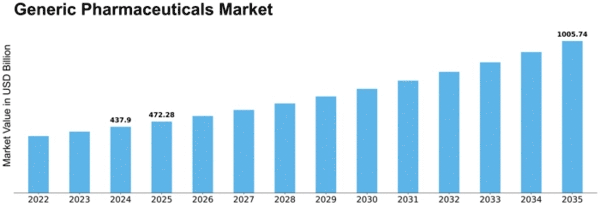

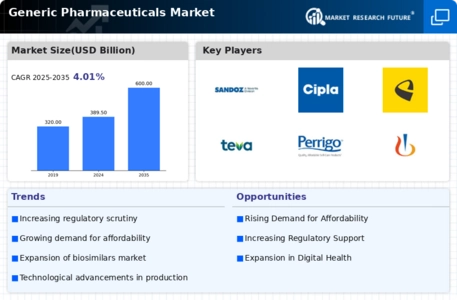
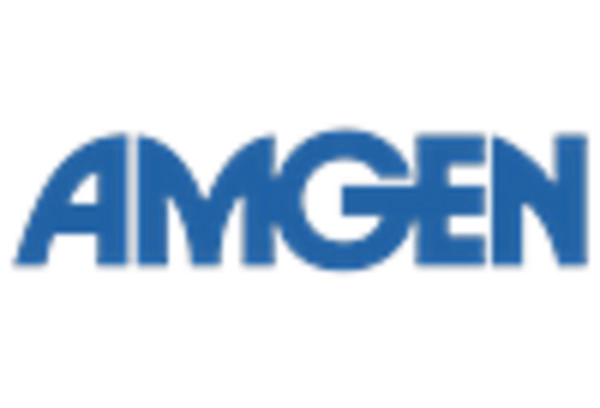
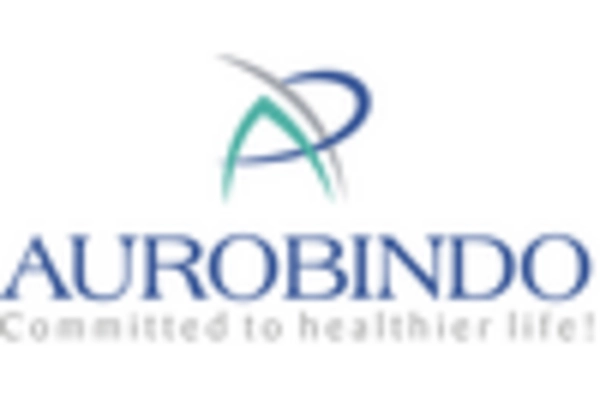
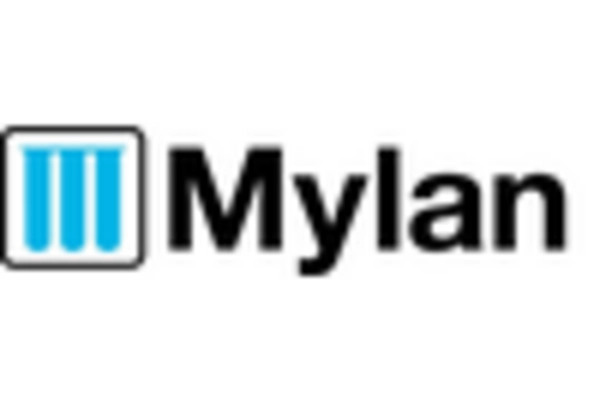
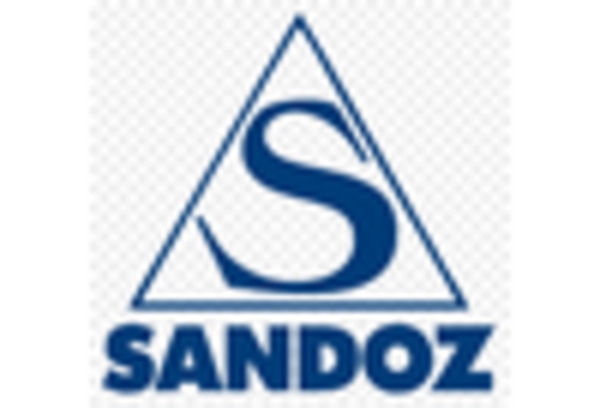
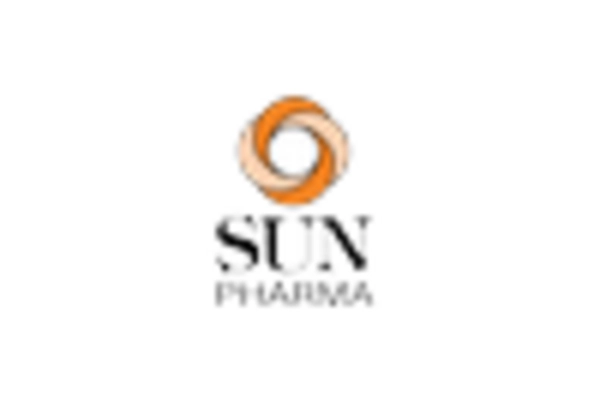
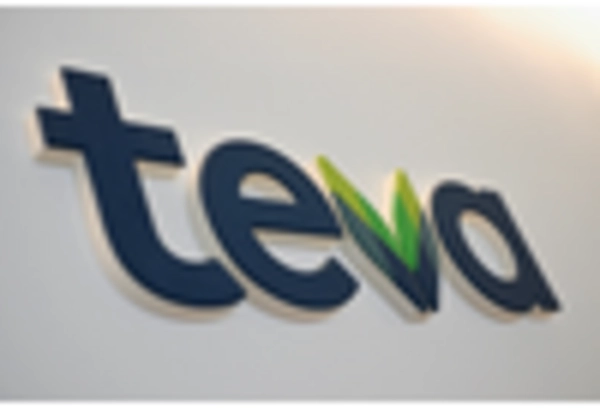









Leave a Comment